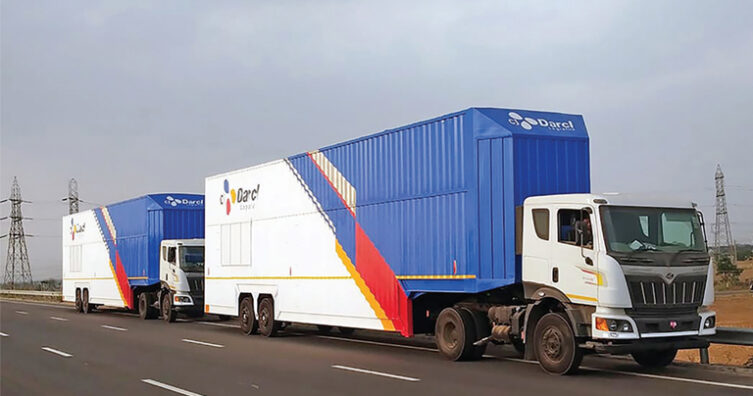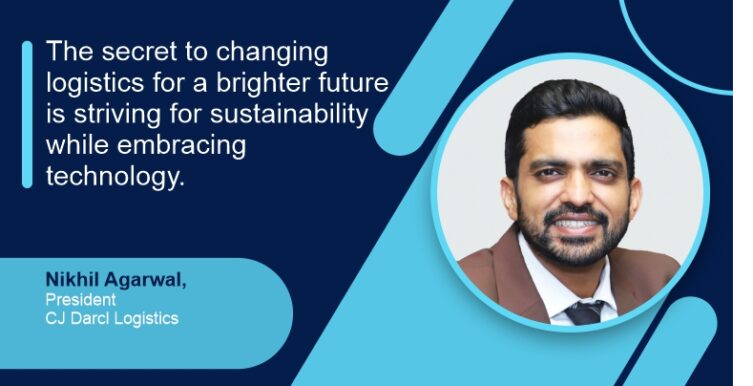The secret to changing logistics for a brighter future is striving for sustainability while embracing technology.
Nikhil Agarwal, President of CJ Darcl Logistics, in an interview with B2B Purchase Magazine, elaborates on strategies for optimizing truckload efficiency, advocating for rail multimodal systems, reducing carbon footprints, and leveraging digitalisation and data insights to enhance logistics efficiency.
How does CJ Darcl optimise full truckload efficiency and reduce transportation costs?
At CJ DARCL Logistics, we believe in the concept of ‘humanising efficiency’ through our integrated supply chain management solutions. A cornerstone of our services is the Full Truck Load (FTL) service, which leverages our extensive network of over 2 lakh market fleets, including 1000+ owned vehicles. Operating on an asset-right model with both owned and hired fleets across India, this expansive network enhances our operational efficiency, reduces costs, and provides cost-effective solutions to our customers.
Transparency is paramount, and our use of GPS and SIM-based technology ensures real-time fleet data, fostering transparency in our operations. Customised solutions tailored to our customer’s requirements are a key offering. We’ve also integrated multimodal solutions to reduce our carbon footprint while increasing operational efficiency.
Notably, our ‘Transport Decompression Algorithm System,’ developed by CJ Logistics at the TES Logistics Technology Research Center in Korea, represents a cutting-edge, patented K-Logistics technology that has been successfully implemented in India through CJ DARCL Logistics.

What are the benefits of using rail multimodal systems in your logistics, and how is the intermodal transition managed?
As companies seek more cost-effective, faster, and sustainable transportation options, rail multimodal systems have gained prominence over road transportation. This shift is driven by the rising costs of road transport due to fuel expenses and longer transit times. Rail multimodal systems offer a competitive edge, enabling customers to reduce their carbon footprint and expand the rail logistics cluster in the domestic market.
At CJ DARCL, we ensure efficient intermodal transitions. We begin by sharing tentative rake schedules with clients at the start of each month to draft their dispatch plans. Once fixed, we plan the rake movement accordingly. Orders received from customers prompt the movement of containers from the consignor’s plant to our terminal via road trailers. At the consignor’s plant, cargo is loaded into containers, sealed, and returned to the origin terminal for stacking. From there, loaded containers are connected to the rake for rail transport to the destination terminal. Upon arrival, we stack containers and proceed with cargo delivery based on the consignee’s delivery plan, offering both direct container delivery and de-stuff delivery as per operational feasibility and customer requirements.
What environmental strategies have you implemented to lower the carbon footprint of truckload and rail multimodal transportation?
Sustainability is a core focus at CJ DARCL Logistics. To become the No. 1 total logistics service provider by 2027, we’ve initiated several sustainability initiatives. These include shifting operations from roadways to railways and significantly reducing carbon emissions by moving over 40 rakes monthly. Multimodal connectivity across India, strategic warehouse placement, and our first electric vehicle (EV) pilot in Bangalore are additional steps toward achieving zero carbon emissions. This progressive approach embraces alternative fuels for both short and long-haul cargo delivery.
How is your organisation integrating digitalisation and data insights to enhance visibility and efficiency in truckload and rail multimodal operations?
Recognising the critical role of technology in supply chain management, CJ DARCL Logistics has embraced digitalisation and data analytics. Our tech arsenal includes Transportation Management Systems (TMS) for tracing and tracking, ERP-SAP applications for accounting, a Warehousing Management System (WMS) for inventory and operations management, and a Freight Management system for Customs Clearance, Booking, BL documentation, and tracking.
We also utilise a visibility system to monitor KPIs, performance, and productivity. In-house developed tools aid in capacity planning and network optimisation. AI dashcams are deployed in our fleet, enhancing fleet management, safety standards, and cost-effectiveness. These AI-enabled devices support driver coaching, expedite driver exonerations, handle insurance claims, and improve fleet operation performance while reducing theft incidents. At CJ DARCL, our commitment to technology empowers us to reduce costs, minimise errors, enhance operational efficiency, and achieve faster turnaround times.
Cookie Consent
We use cookies to personalize your experience. By continuing to visit this website you agree to our Terms & Conditions, Privacy Policy and Cookie Policy.


















